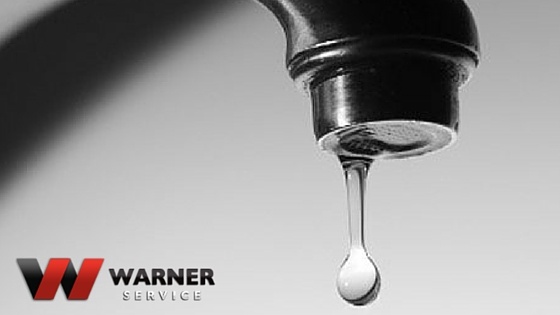
Arguably, one of the most annoying sounds is hearing your faucet go drip, drip, drip. It’s easy to ignore the sound; however, this leak is costing you more than just your sanity and a good night’s sleep. Leaks from sink faucets, toilet pipes, showerheads and many other places around your home can be at the expense of the environment. (Leaks are one of the leading causes in water waste.)
Aside from not being eco-friendly, leaks can also cost you more money on your water bill and even early repairs and replacements of your appliances, which affects the overall economy. To define the true cost of a leak, here is Warner Service’s breakdown on water waste:
To the environment:
- 10 drips per minute wastes 500 gallons of water per year, which equals 11 full bathtubs of water
- 1 drip per second wastes 3,000 gallons of water per year, which equals 66 full bathtubs of water
- A constant running drip wastes 72,000 gallons of water per year, which equals 1,617 full bathtubs or more than 4 backyard-sized swimming pools of water.
To your wallet:
- A leaky faucet at one drip per second can cost you around $54 per year. That’s 7 visits to Chipotle.
- A burst pipe (or a tap left fully open) can cost you around $230 per day. That’s buying 2 tickets to Disneyworld every day.
To your home:
- A small leak behind your wall from pipes can lead to drywall damage, costing you about $400 in repairs – money you could be saving to take that trip to Disneyworld.
- Undetected leaks can lead to mold, and mold remediation can cost from hundreds to thousands of dollars.
- 69 percent of water heaters fail due to a slow leak or a sudden rupture, which can cost you about $4,000 in repairs or replacements. That equates to about one semester at the average public university.
To the economy:
- Experts estimate that fixing infrastructure problems due to water damage could cost $335 billion in the next 20 years.
- Most insurers do not cover water damage claims anymore because it costs them about $2.5 billion each year.
According to a recent report by CNN, about 700 main water breaks occur daily in the United States. To avoid being part of this startling statistic, here are some of Warner Service’s fastest ways to detect a leak in your home:
- If you hear that drip, drip, drip sound, turn your faucet or shower completely off.
- Drop a few drips of food coloring into your toilet tank and wait a few minutes. If the color shows up in the bowl, the toilet flapper is leaking and needs to be replaced.
- Check your yard for any wet spots or very green patches. This could mean there is an indoor leak that is running into the yard.
- Call a professional to check the water meter outside.
- Listen for abnormal sounds in your home’s pipes and hot water tank. These could include hissing, whooshing, splashing, rapid beating or thumping, or clinking.
- If you need to routinely add at least 2 inches of water to your swimming pool per week, there could be a leak present.
The true cost of a leak affects more than most homeowners think. From depleting the environment and worsening the economy to damaging your own home and wallet, leaks and drips can be detrimental. To detect a leak in your home, use the DIY techniques above. If you suspect a leak or would like a professional to proactively check your home, call Warner Service today.


